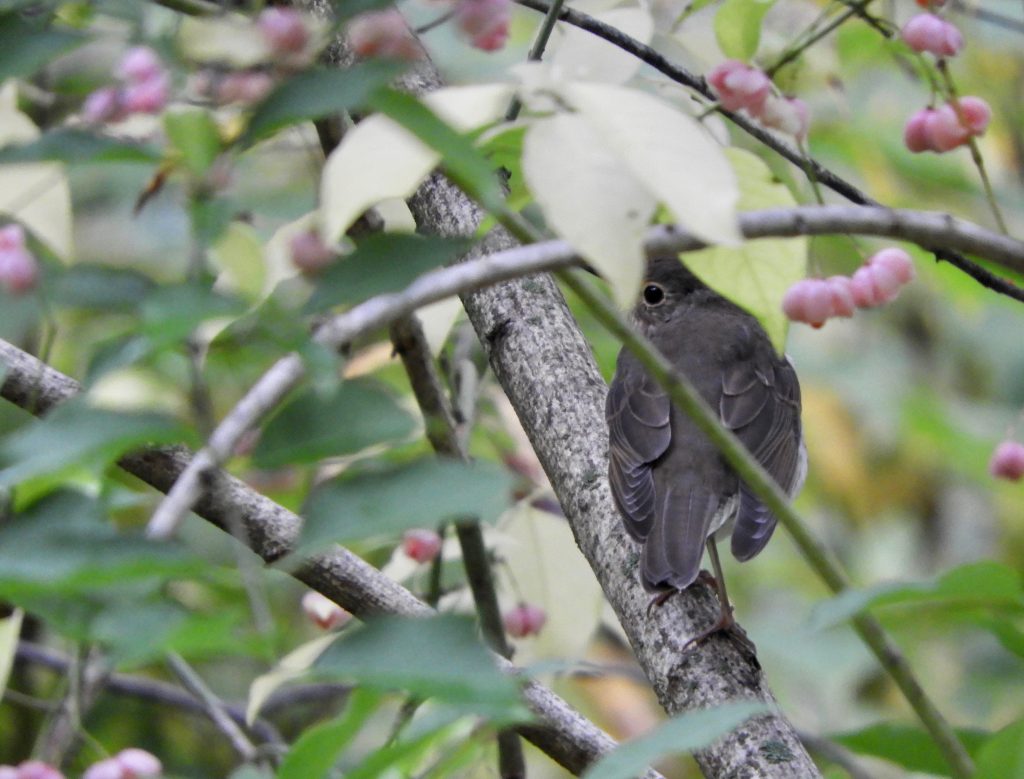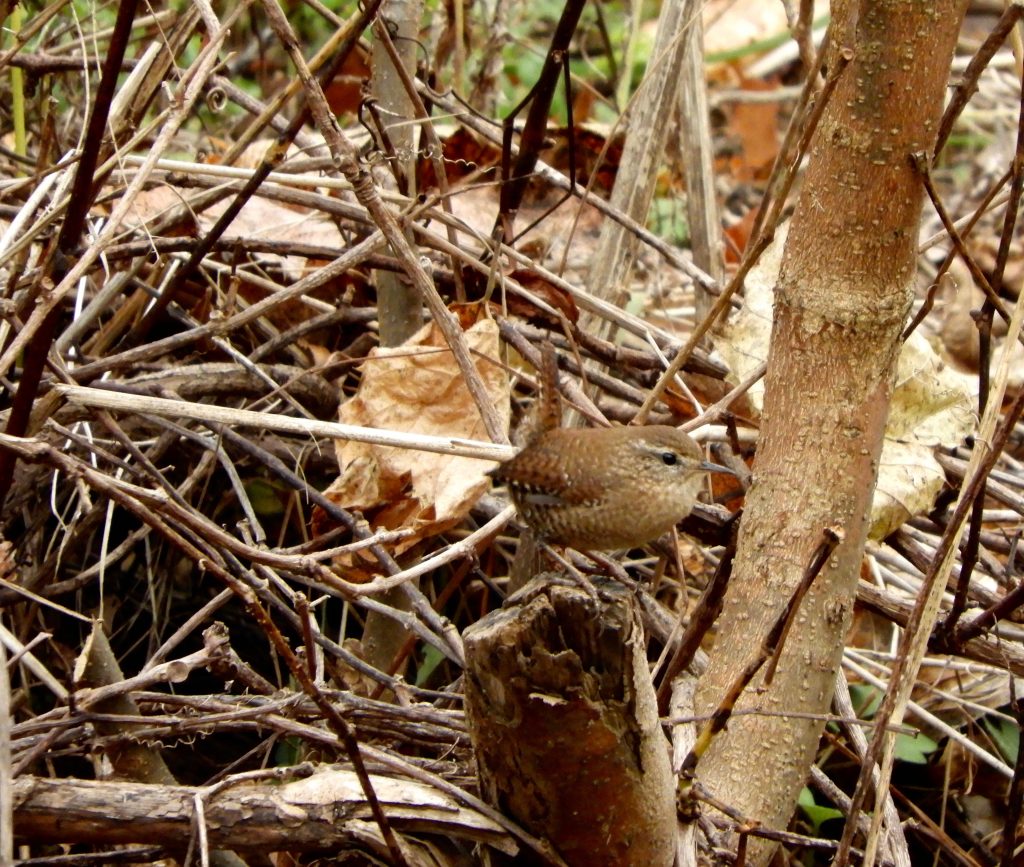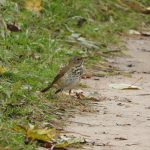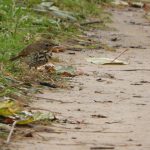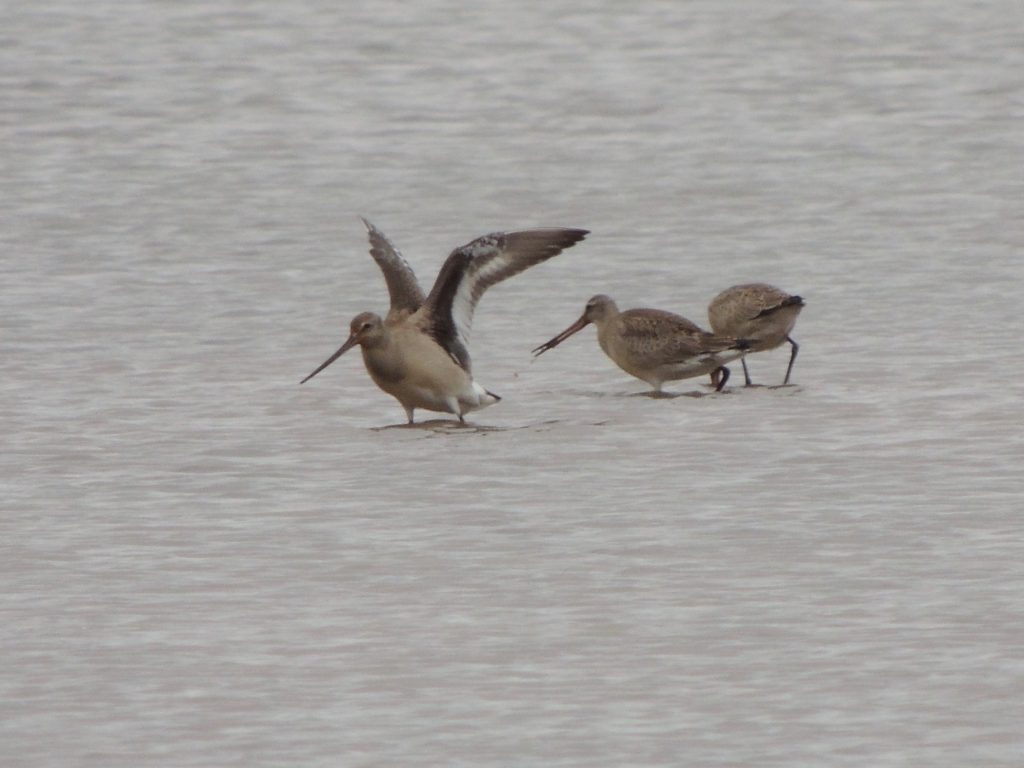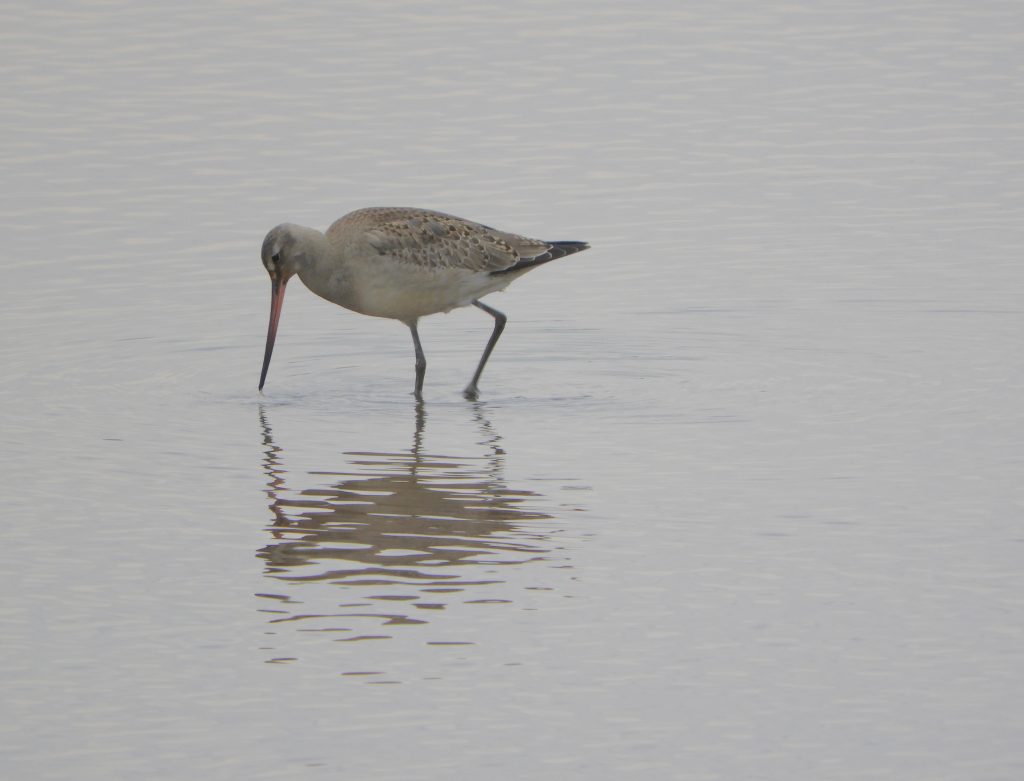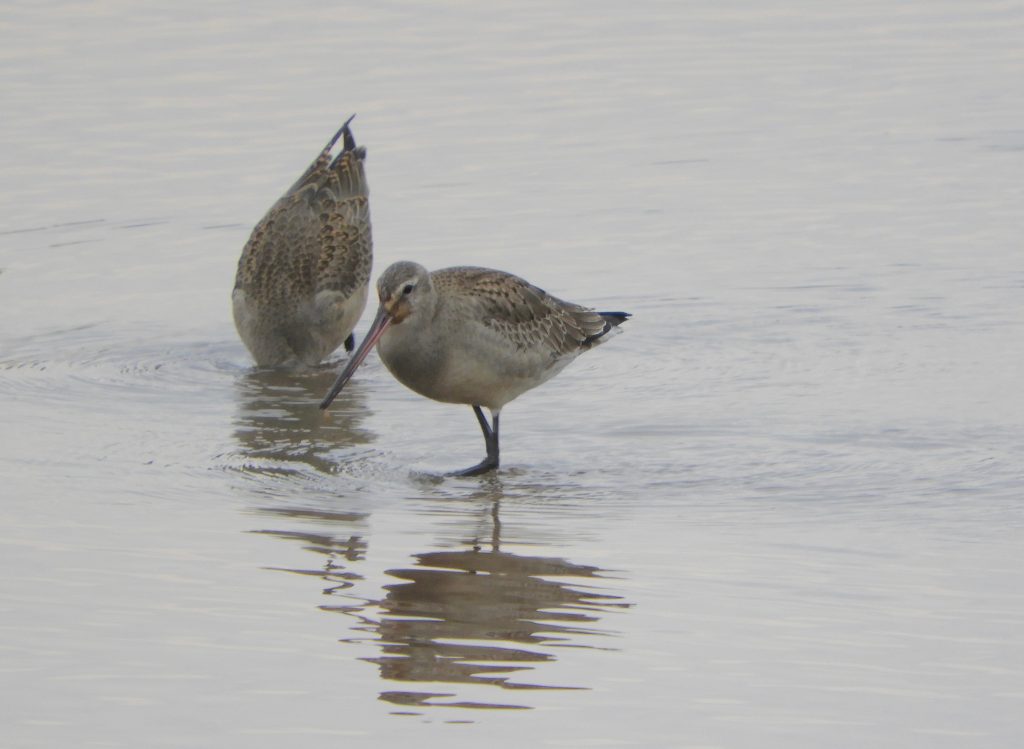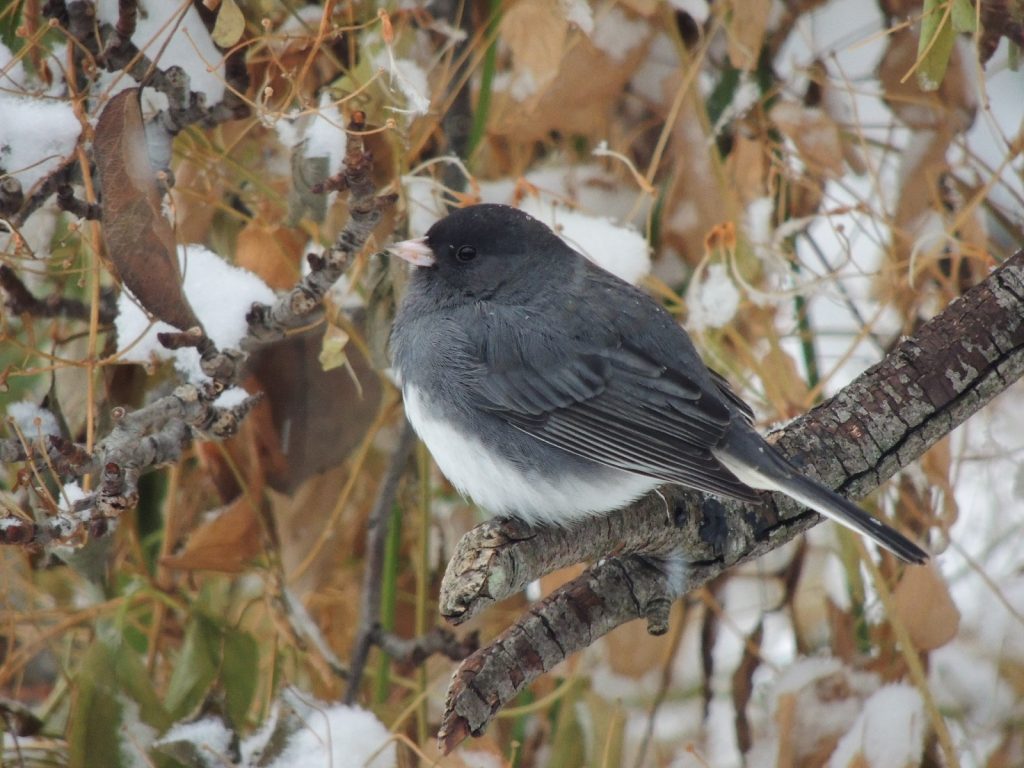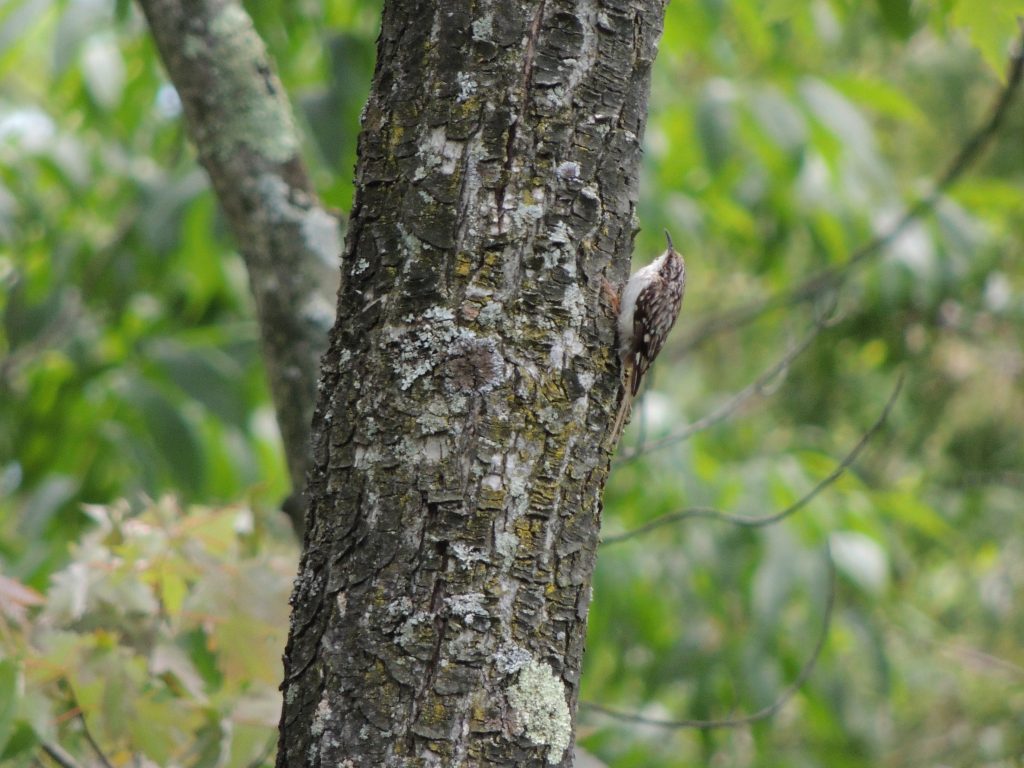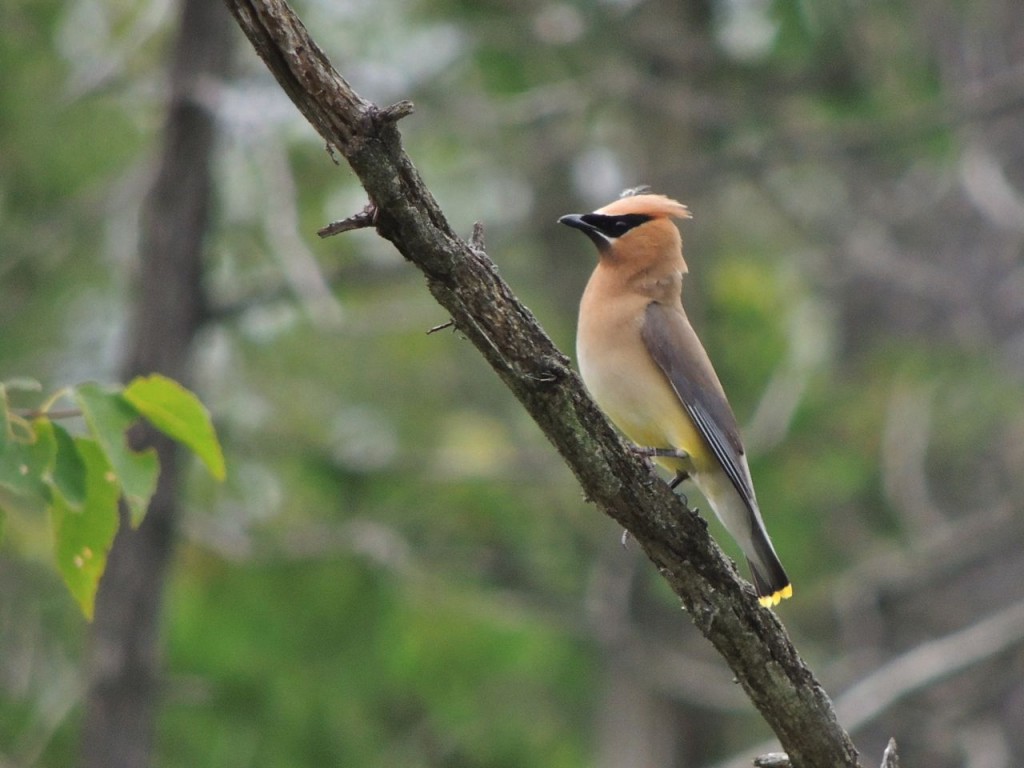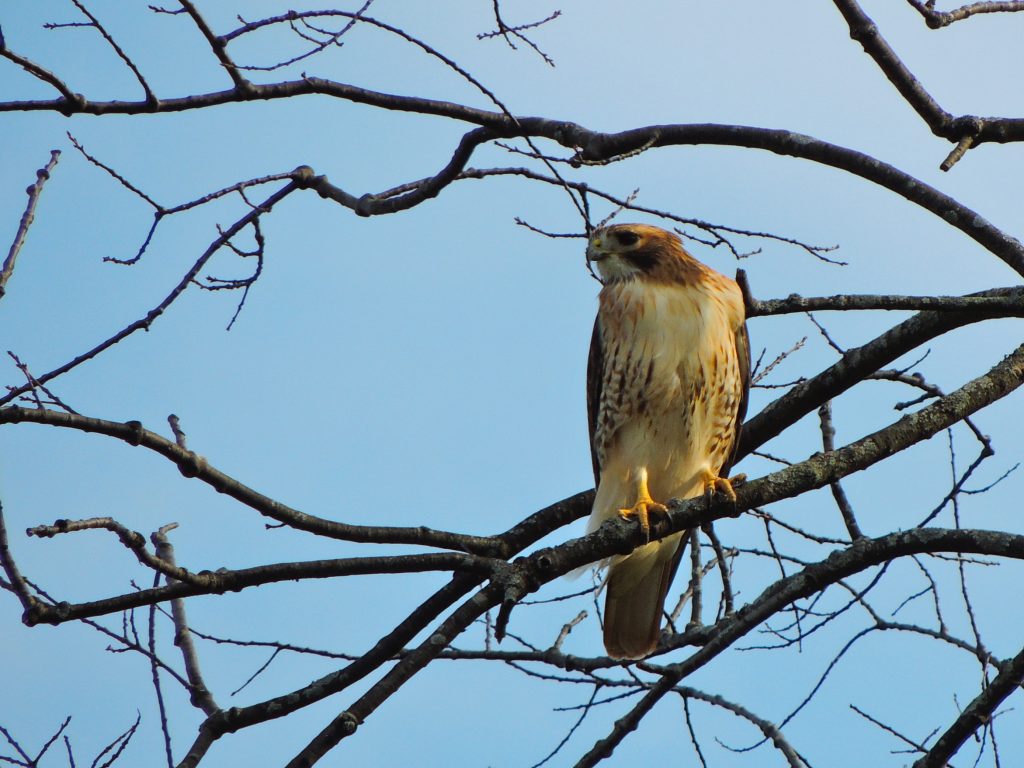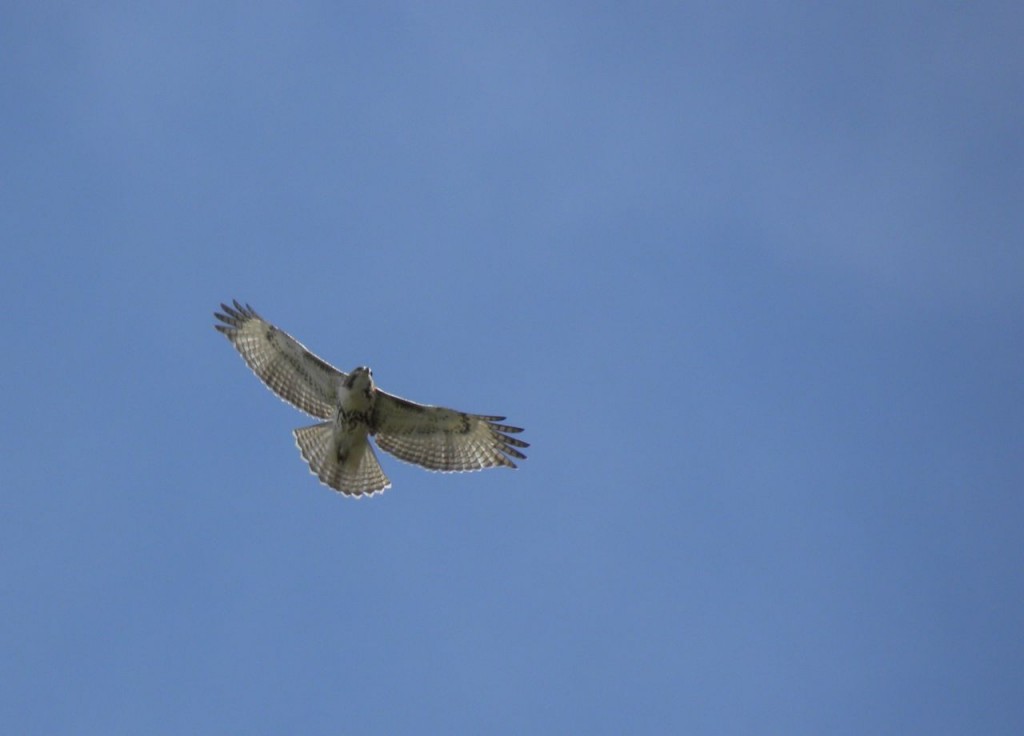October 7 2018 Hendrie Valley, RBG, Burlington, ON. I have made three attempts at starting this and each one just fell flat. I was trying to find my way in to telling how I’d seen a Gray-cheeked Thrush on my transect and that it was my Bird of the Day. Frankly I set it aside and it has sat for a while, but a Gray-cheeked Thrush is not to be cast aside so easily. I suppose I could stop there but it would be incomplete without a setting, all the time and place stuff and better late than never.
This was the day after some dirty weather had stirred up birds in general and migrants in particular urging some to move on and others to take cover.
This valley is very sheltered and habitat is varied, there are woodland trails, ponds and a small river that empties downstream into a large natural (but now heavily industrialised) harbour. The valley is one small part of Ontario’s Royal Botanical Gardens where there’s a lot of growing going on. I bring the RBG into it because, through no fault of its own, some of its cultivated possessions scatter their seed indiscriminately and botanical oddities pop up where you least expect them. One or two of these escaped species, once valued specimens, have become a major nuisance, Tartarian Honeysuckle, for example, is a major component of some woodlands on RBG property profoundly altering their ecology by crowding out native species.
The valley is dominated by towering Red Ash (now being destroyed by Emerald Ash Borer; another ecological catastrophe), Sugar Maples, White Pines, Red Oaks, and with Witch Hazel in the understory. But here and there are exotic escapes probably delivered via a bird’s digestive system, among them a Spindle Tree or Euonymous europaeus, a tall shrub or maybe short tree which bears pink fruit in fall.
Today I noticed two or three Hermit Thrushes devouring Spindle Tree fruit and with them one Gray-cheeked Thrush. Just seeing a thrush is often sufficient reward, they tend to be reclusive and evasive but have a kind of white-glove elegance. As I’ve noted before, all of our thrush species have a discrete, almost shifty, way of moving from your approach, making you wonder whether you only imagined movement. But these birds were marginally more interested in the fruit so persistence provided many opportunities to study them.
If you were to go back through my posts you’d see that I’ve written before about Hermit Thrushes (including just yesterday), Wood Thrush (photo May 12) and that Veerys and Swainson’s Thrushes have themselves been Bird of the Day on odd occasions. It’s time, I think for the Gray-cheeked Thrush. Here’s a photo of one retreating shyly. Hardly a startling bird unless, like me, you really have a soft spot for thrushes in general.
